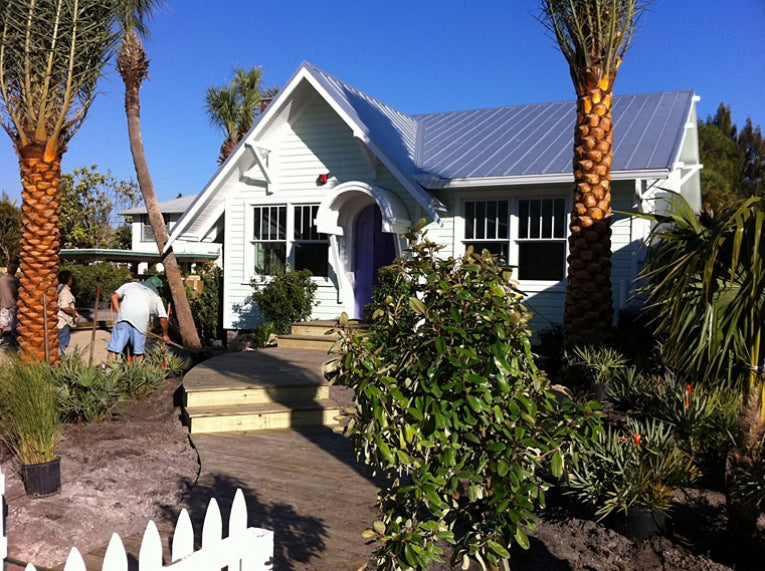Situated on the Gulf Coast near St Petersburg it is an area full of charming, characterful old buildings. Of course, being vintage, means that they do not come anywhere near modern standards of environmental impact, let alone the state-of-the-art zero emissions that is the target of this project.
From their beginnings, founding the first UK brand of organic baby food, called Organix, in 1982, social entrepreneurs Mike and Lizzie have been campaigning for a better lifestyle. Lizzie says, "It is better to harness people's enthusiasm and show them: this is what we've done, and it works - than write academic papers". They sold the baby food business in 2008 for a tidy sum, and put their energies - not to mention $3 million - into their new project: a low carbon sustainable community.
As they had vacationed in Florida for many years, it seemed the ideal location for their new venture. They found the beautiful but dilapidated area in 2005, and after much planning, work started on the Anna Maria Island Historic Green Village in October 2010. The development is a mix of historic and new structures, with both residential and commercial buildings on the same site, preserving the charming character of the area, while aiming for LEED Platinum categorisation, or the highest standards of sustainability in the USA. The 7 commercial and two rental buildings, when finished, will, they hope, "set a new benchmark of performance in energy, water and sustainable design."

Photos: Sears Cottage being moved
Just to prove that no obstacle would stop them, they "recycled" a 1935 Sears Roebuck catalogue home (yes, in those days you could mail-order a home from Sears and it would arrive in pieces, like a giant kit - for you to assemble!) by putting it intact on a massive truck and moving it half a mile to its new location in the village. Large groups of locals and the TV news turned out to see this - after all it is not everyday you see a house driven along a road. Except when the Thrashers did it again: and moved the Angler's Lodge, another historic building, onto the village lot.
The technologies employed in the village include solar PV and solar thermal panels on the houses, smart energy metering, rainwater collection for washing, and ground source thermal pumps which bring up water from 450 feet below ground to power the heating or cooling system as required.

Photo: The Rosedale Cafe
The Green Village site has both businesses and residential buildings, including the Rosedale Cafe, whose staff can check their building's energy consumption any time they want through a dedicated website.
This positive feedback means that they have made changes to their procedures to reduce energy. They put a cover over the chilled bakery case at night, unplug the three coffee machines and turn off the air conditioning, which starts up again at 5 am to be ready for the first customers at 7 am. The air-con is set at 76º Fahrenheit, not 71º which is comfortable and yet reduces energy consumption.Other commercial enterprises include Relish, which sells vintage clothes, a bike/kayak hire concession and a general store which supplies organic and sustainable goods.
Lizzie Vann Thrasher puts her view on what is the main impetus behind the village's development, "Facts and theories are all very well, but if we're trying to inspire people to change the way they use energy then practical examples are a lot more helpful for most people. There are many many problems with using fossil fuels, but we humans are an inventive lot and will adapt to survive. Renewable energy is the way of the future. Mike and I want the Green Village to be a leader in this area - which means making it cutting edge, innovative, fun, practical, inspiring and a pleasure to visit."
Further building and improvements are expected to complete the village by February 2012.
Links:
Anna Maria Island Historic Green Village










